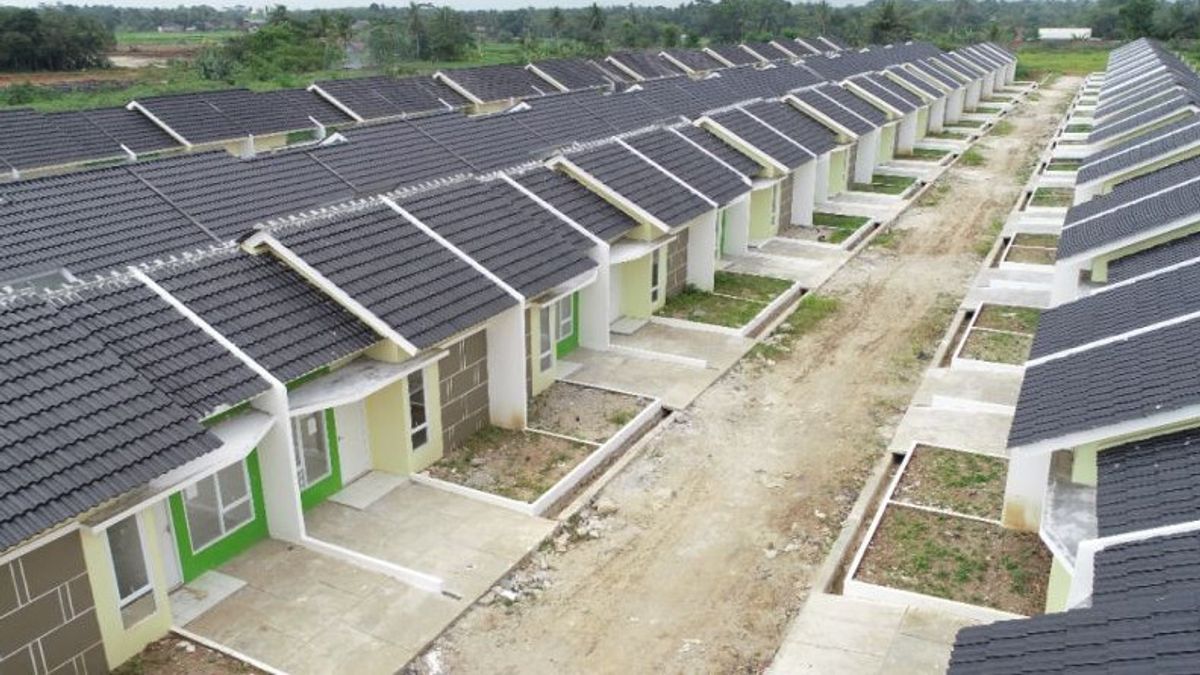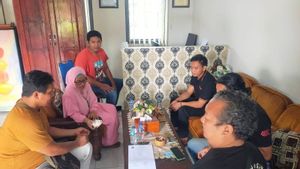JAKARTA - Houses or often referred to as boards are one of the basic needs of the community. However, considering that house prices continue to soar due to rising land prices and building materials, many residents are increasingly difficult to own.
In fact, the key to the success of the program of a million houses that continues to be rolled out to meet the needs of community boards is to provide affordable housing for the general public.
Even if they are not able to buy a house, the Government facilitates people with simple rented flats (rusunawa). The hope is that after having established income, they will be able to own a house.
The phenomenon in the field is not like that. People who do not have a house (still renting) is so large, but the supply (supply) of uninhabited houses (empty houses) also increases. Of course there is something that must be addressed so that more people who own houses.
The Chief Economist at The Indonesia Economic Intelligence (IEI) of the Archipelago stated that one of the principles that must be met in the implementation of housing is affordability.
So far, various efforts to increase housing affordability have focused more on the aspects of cost control and prices. For example, through controlling the prices of raw materials, land, and controlling the housing market.
These various efforts have indeed contributed to increasing affordability. However, these efforts are not enough. These efforts only touch the aspect of affordability on the supply side. These efforts will be more effective when combined with efforts to increase affordability from the funding side.
The goal, so that more and more people are able to own a house. The strategy is through the mobilization of cheap liquidity from the community. The existence of cheap liquidity has a strategic role for efforts to increase affordability of houses, especially in terms of demand.
So far, the mechanism for mobilizing funds for housing is more dependent on banking. Because banking is a commercial institution, the mobilization of cheap funds is limited.
Only banks with complete infrastructure that have a'special right' can mobilize cheap funds aggressively. On the other hand, it takes the involvement of many financial institutions to mobilize these cheap funds.
The motive for depositing funds in banks is actually not just saving, but also investing. They put their funds in banks other than for security, also hoping for high returns, at least to maintain the real value of their money.
Then in order to reduce the cost of funds in banks, the government intervened. The government intervenes through the state budget in the form of providing housing financing liquidity facilities (FLPP).
Mechanisms are FLPP funds mixed (blended) with banking funds, resulting in lower combined interest rates. This mechanism is quite successful in reducing housing financing costs so that interest rates for mortgage ownership loans (KPR) for the community can be reduced at the lowest level.
So far, data shows that FLPP management, both since being managed by the Government until now managed by the People's Housing Savings Implementing Agency (BP Tapera), shows a fairly good performance.
Collecting savings
In order to strengthen the cheap liquidity ecosystem, the Government has formed BP Tapera. As a special agency, BP Tapera has the task of collecting savings, managing it, and fostering it through various investment instruments.
The proceeds from the management of these funds were then used to finance housing needs for its participants.
Tapera's task is to combine the concept of financing and old-age savings. Through Tapera, participants in addition to obtaining housing financing facilities at low (interest) costs, at the end of the participants also obtained savings returns along with investment benefits.
This concept is beneficial for Tapera participants. The Tapera concept is similar to other social security concepts that apply to social security. Through participation in a social security, apart from getting the benefits of social security as long as they are participants, they finally get a return on savings along with the investment results.
Despite acting as a housing financing institution, BP Tapera cannot distribute direct financing to participants. Financing is carried out by the financing implementing bank.
In this context, the collaboration between Tapera and the implementing bank is a solution to the mismatch problem experienced by banks. Tapera funds will be a component of low-cost banking funds to finance mortgages for Tapera participants. Banking also benefits because the existence of Tapera can expand the mortgage market.
Although Tapera is designed to support the provision of affordable houses, its operations still require institutional strengthening and support from stakeholders.
This includes, so that the Tapera concept can move more effectively, some improvements are needed in mechanisms and regulations.
Target
Since its establishment in 2018 from Bapertarum-PNS, the performance of the People's Housing Savings Management Agency (BP Tapera) has been on target.
In 2022, the realization of the distribution of funds for the BP Tapera housing financing liquidity facility (FLPP) will reach 226 thousand units worth IDR 25.15 trillion, according to the target set.
Meanwhile, as of September 2023, the realization of the distribution of FLPP funds reached 166,883 units worth Rp18.91 trillion. By the end of the year, the total distribution of FLPP funds will reach 229 thousand units.
BP Tapera Commissioner Adi Setianto stated that the success of meeting the target was due to cooperation with banks because they are the spearhead for people who will buy houses.
In principle, the need for housing financing is still very large. The proof is, the combined annual growth rate (CAGR) or known as the annual growth rate combined with the distribution of BP Tapera FLPP funds reached 27.42 percent during 2020-2023. Now it's just a matter of how people reach BP Tapera or vice versa.
BP Tapera channeled housing financing through Tapera and FLPP funds. The financing of tapera funds consists of housing loans (KPR), home-building loans (KBR), and home renovation loans (KRR), with a competitive interest rate of 5 percent.
In the KPR, BP Tapera's financing tenor reaches 35 years for flat units and 30 years for landed houses, while Home Building Credit (KBR) 20 years, and Home Renovation Loans (KRR) 10 years. Meanwhile, the mortgage interest for FLPP funds distributed by BP Taperase is 5 percent and tenor is 20 years.
Sources of funds from Tapera consist of contributions, the results of the wages of participants' savings, the return of credit, and the results of the transfer of employee housing savings assets. Then, other funds, such as waqf, and FLPP funds.
There are two Tapera participants, namely registered companies or ASN and independent workers. This year, BP Tapera targets to become 30 thousand independent participants with a target of distributing 50 thousand FLPP.
Regarding the funds invested participants, BP Tapera manages based on the Tapera management fund contract (KPDT) by the custodian bank (BK). Furthermore, BK in the context of fertilizing Tapera funds in collaboration with investment managers to conduct collective investment contracts (KIK). Investment instruments are low-risk ones, such as money markets, bonds, housing securities, and other safe and profitable investments.
As for the funds from Bapertarum-PNS, BP Tapera also received IDR 11.8 trillion with 5.04 million participants as of December 2020. Of that amount, based on BP Tapera's review, the participants received 1.02 million heirs worth IDR 2.69 trillion, while the participants were active 4.02 million worth IDR 9.18 trillion.
BP Tapera has an important role in the money market on one side, while the other facilitates the provision of houses at affordable prices.
The English, Chinese, Japanese, Arabic, and French versions are automatically generated by the AI. So there may still be inaccuracies in translating, please always see Indonesian as our main language. (system supported by DigitalSiber.id)










